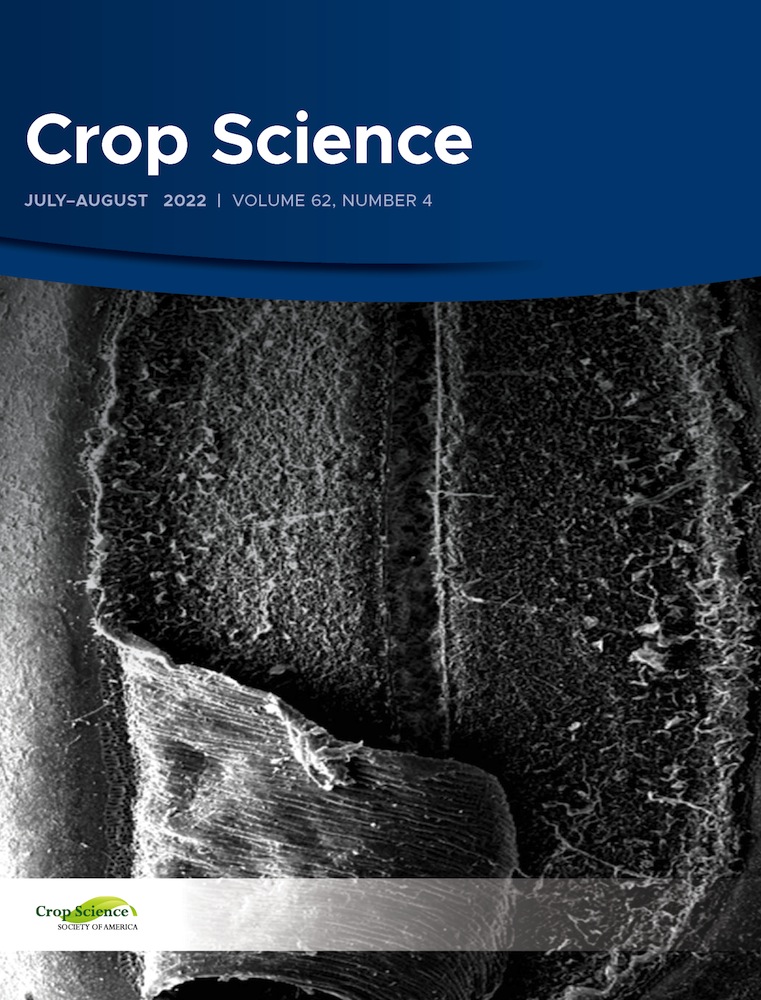Ver ítem
- xmlui.general.dspace_homeCentros Regionales y EEAsCentro Regional Buenos Aires SurEEA BarrowArtículos científicosxmlui.ArtifactBrowser.ItemViewer.trail
- Inicio
- Centros Regionales y EEAs
- Centro Regional Buenos Aires Sur
- EEA Barrow
- Artículos científicos
- Ver ítem
Contribution of tillers to maize yield stability at low plant density
Resumen
One of the main challenges of using low plant densities in restrictive and variable environments is to maximize the use of resources in better-than-expected years. The adoption of prolific genotypes has addressed part of this problematic, through an increase in reproductive plasticity. However, tillering could be an alternative to increase reproductive and vegetative plasticity, this latter is generally low in single shoot crops. The objectives of this
[ver mas...]
One of the main challenges of using low plant densities in restrictive and variable environments is to maximize the use of resources in better-than-expected years. The adoption of prolific genotypes has addressed part of this problematic, through an increase in reproductive plasticity. However, tillering could be an alternative to increase reproductive and vegetative plasticity, this latter is generally low in single shoot crops. The objectives of this study were (i) to characterize the correlation between environmental conditions, tillers’ traits (tillers per unit area, tillers´ ears per unit area, tillers grain yield), crop grain yield, and grain yield advantages due to tillers, (ii) to determine the grain yield response to tillering (i.e., grain yield difference between tillered and non-tillered crops) for a wide range of environments, and (iii) to evaluate the impact of tiller presence on grain yield of the main shoot, considering its effect on the apical and sub-apical ears. Tillered and non-tillered crops were evaluated under rainfed conditions during two seasons (2018/19 and 2019/20). These experiments were carried out at 11 sites in the southern Argentinean Pampas, varying sowing date (22 October to 5 December), plant density (2-3 pl m−2), genotype (AX7784 and AX7761), and soil depth. Grain yield (3.2-11.9 Mg ha−1) was correlated with tillers productivity, mainly explained by post-flowering precipitations. The contribution of tillers to grain yield was more proportional than their consequent yield depression at the main shoot. Tillers either increased (3 sites) or maintained (8 sites) grain yield and, their contribution increased as the environment improved without any detrimental effect in the most restrictive environments. Tillering has the potential for increasing resource (radiation, water, nitrogen) use efficiency under low plant density strategies adopted for restrictive environments.
[Cerrar]

Autor
Massigoge, Ignacio;
Ross, Fernando;
Fernandez, Javier A.;
Echarte, Laura;
Ciampitti, Ignacio A.;
Cerrudo, Aníbal Alejandro;
Fuente
Crop Science (First published: 05 August 2022)
Fecha
2022-08
Editorial
Wiley
ISSN
1435-0653
0011-183X
0011-183X
Formato
pdf
Tipo de documento
artículo
Palabras Claves
Derechos de acceso
Embargado
 Excepto donde se diga explicitamente, este item se publica bajo la siguiente descripción: Creative Commons Attribution-NonCommercial-ShareAlike 2.5 Unported (CC BY-NC-SA 2.5)
Excepto donde se diga explicitamente, este item se publica bajo la siguiente descripción: Creative Commons Attribution-NonCommercial-ShareAlike 2.5 Unported (CC BY-NC-SA 2.5)

